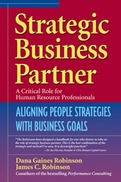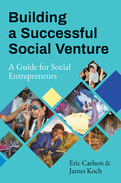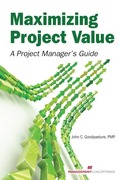Corporate whistleblowers save lives, prevent fraud, and preserve the environment. But these results come through a long, difficult, draining, and often frightening process that leads many unprepared would-be whistleblowers to give up. Fortunately, they now have the support they need. This unprecedented and authoritative guide covers every step of the process—finding information to support your claims, determining whom to blow the whistle to, dealing with attacks from opponents, enlisting allies, understanding the law, and more.
-
Offers not just authoritative, accessible information but advice on every step of the whistleblowing process
-
Copublished with the Government Accountability Project, which has been aiding and protecting whistleblowers since 1977
-
Illustrated with vivid examples drawn from GAP's thirty-year history
- Click here for Press Release
Corporate whistleblowers save lives, prevent fraud, and preserve the environment. Some even become famous. But what the general public sees is the end result of a long, difficult, draining, and often frightening process. Whistleblowers rarely have any idea what they're in for and, daunted by the ferocity of the resistance and their feelings of isolation and helplessness, some give up, and others are broken financially and emotionally.
Blowing the whistle will always require courage and perseverance, but it no longer has to be done alone. The Corporate Whistleblower's Survival Guide will serve as an expert advisor for anyone contemplating bringing corporate wrongdoers to justice. Tom Devine and Tarek F. Maassarani draw on the accumulated experience of the Government Accountability Project, which since 1977 has helped over 5,000 people take on organizations like AIG, the World Bank, Procter & Gamble, Wyeth Pharmaceuticals--and win.
Devine and Maassarani detail every consideration potential whistleblowers should weigh and paint a vivid picture of the tactics corporations use to attack whistleblowers and cover up or deny damaging revelations. If you are considering blowing the whistle, this book offers hands-on, practical advice on every aspect of the process--finding information to support your claims, determining who to blow the whistle to, enlisting allies, and taking advantage of what legal options exist. The Corporate Whistleblower's Survival Guide will enable readers to bring vital information to light while keeping their sanity, relationships, and careers intact.
Clarify real requirements before you initiate project work
Improve management of project requirements
Save time and effort
Manage to your schedule
Improve the quality of deliverables
Increase customer satisfaction and drive repeat business
Project Requirements: A Guide to Best Practices provides project managers with a direct, practical strategy to overcome requirements challenges and manage requirements successfully.
Unfortunately research also indicates that few HR functions have become strategic. Most still operate in a primarily administrative and tactical manner—the very work that is increasingly being outsourced. Clearly there is a gap between what business leaders and employees need from their HR departments and what HR is providing.
HR functions must become more integrated into the business, with some people on the HR team assuming the role of Strategic Business Partner (SBP). Here, Dana and Jim Robinson offer guidance for HR, Organization Development and Learning professionals who aspire to transform themselves into effective Strategic Business Partners. They explain how SBPs build partnerships, based upon credibility and trust, with key organization leaders. These partnerships provide SBPs with opportunities to identify and support projects directly aligned with business goals. The success of these projects deepens the SBPs' credibility, enabling them to be viewed as strategic partners. At this higher level of accountability, SBPs work with business leaders to form long-range business strategies and plans, creating and implementing people initiatives that link into and support the business strategies and plans.
This practical guide offers case studies, exercises, tips, and tools you can use to become a Strategic Business Partner in your organization.
- By the coauthors of the bestselling Performance Consulting and Zap the Gaps (with Ken Blanchard)- each more than 60,000 copies sold
- The first book to show human resource professionals precisely how they can assume the critically important role of Strategic Business Partner
- A how-to book filled with specific techniques and practices to use on the job
Building a Successful Social Venture draws on Eric Carlson's and James Koch's pioneering work with the Global Social Benefit Institute, cofounded by Koch at Santa Clara University's Miller Center for Social Entrepreneurship. Since 2003, over 200 Silicon Valley executives have mentored more than 800 aspiring social entrepreneurs at the GSBI. It is this unparalleled real-world foundation that truly sets the book apart. Early versions of the book were used in both undergraduate and MBA classes.
Part 1 of the book describes the assumptions that the GSBI model is based on: a bottom-up approach to social change, a focus on base-of-the-pyramid markets, and a specific approach to business planning developed by the GSBI. Part 2 presents the seven elements of the GSBI business planning process, and Part 3 lays out the keys to executing it. The book includes “Social Venture Snapshots” illustrating how different organizations have realized elements of the plan, as well as a wealth of checklists and exercises.
Social ventures hold enormous promise to solve some of the world's most intractable problems. This book offers a tested framework for students, social entrepreneurs, and field researchers who wish to learn more about the application of business principles and theories of change for advancing social progress and creating a more just world.
Corporate America continues to struggle with racial equity in a post-George Floyd world. As the United States becomes more diverse and the public consciousness continues to shift, successful racial equity efforts in the workplace are needed now more than ever.
Decentering Whiteness in the Workplace exposes the ways that white culture and expectations are centered in the modern American workplace and the fears within corporate spaces about talking candidly, openly, and honestly about whiteness, white supremacy, and anti-Blackness.
Readers will discover:
- A direct and straightforward analysis about what white-centering is
- An evaluation of the different ways that whiteness is centered in the workplace, such as bereavement and holiday policies and dress codes
- A guide on how to recognize and decenter whiteness within oneself and at work
- Solutions for people to contribute individually and systemically to anti-oppression


















